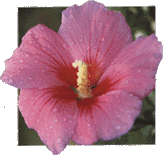|
Republic of Korea | |||||||||||||||||||||||||||||||
|
Location | |||||||||||||||||||||||||||||||
|
| |||||||||||||||||||||||||||||||
|
Area and Topography | |||||||||||||||||||||||||||||||
|
The total area of the peninsula is 221,607 km2, similar in size to that of U.K, New Zealand, or Romania. South Korea possesses 99,237 km2 or 45% of the total land mass, and North Korea 122,370 km2, the remaining 55%. About 70% of the land is mountainous, mainly to the north and east. Along the southern and western coasts the mountains descend gradually towards broad coastal plains. Most of the rivers have their tributaries on the north and east sides, and flow into the Yellow and South Seas. Concentrated for the most part off the southern coast are upwards of 3,000 islands of various sizes that provide scenery unparalleled in the world. | |||||||||||||||||||||||||||||||
|
People and Population | |||||||||||||||||||||||||||||||
|
Koreans, like many other
Asian peoples, are descendants of Mongolian Tungus stock. They differ
from the neighboring Japanese and Chinese, however, in that Koreans are
a homogeneous ethnic group with their own language, culture, and
customs. Population : Annual growth rate : 0.90% (1995) Urbanization rate : 78.5% (1995) Average family size : 3.3 persons (1995) Number of foreign residents : 110,028 (1995) | |||||||||||||||||||||||||||||||
|
The National Flag and Flower | |||||||||||||||||||||||||||||||
|
| |||||||||||||||||||||||||||||||
|
Capital and Major Cities | |||||||||||||||||||||||||||||||
The capital city is Seoul, which is the political, cultural, commercial, financial, and educational center of Korea. Seoul also offers many tourist attractions.
| |||||||||||||||||||||||||||||||
 The Korean Peninsula extends southward
from the northeastern part of the Asian continent between 33 and 43
North Latitude and 124 and 132 degree East Longitude. The standard
meridian of the peninsula is 135, nine hours ahead of GMT. The Amnokgang
and Dumangang Rivers border both China and Russia to the north, and
Japan is just across the East Sea. Since 1945, as a by-product of the
Cold War, the peninsula has been divided at 38 North Latitude into the
capitalist Republic of Korea, or South Korea, and the communist
Democratic People's Republic of Korea, more commonly known as North
Korea.
The Korean Peninsula extends southward
from the northeastern part of the Asian continent between 33 and 43
North Latitude and 124 and 132 degree East Longitude. The standard
meridian of the peninsula is 135, nine hours ahead of GMT. The Amnokgang
and Dumangang Rivers border both China and Russia to the north, and
Japan is just across the East Sea. Since 1945, as a by-product of the
Cold War, the peninsula has been divided at 38 North Latitude into the
capitalist Republic of Korea, or South Korea, and the communist
Democratic People's Republic of Korea, more commonly known as North
Korea.  The Korean flag is called Taegeukgi. Its design symbolizes the
principles of eum and
yang in Oriental
philosophy. The circle in the center of the flag is divided into two
equal parts. The upper red section represents the positive cosmic forces
of yang. Conversely, the
lower blue section represents the negative cosmic forces of eum.
The Korean flag is called Taegeukgi. Its design symbolizes the
principles of eum and
yang in Oriental
philosophy. The circle in the center of the flag is divided into two
equal parts. The upper red section represents the positive cosmic forces
of yang. Conversely, the
lower blue section represents the negative cosmic forces of eum. The national flower of Korea is the
mugunghwa or Rose of
Sharon. Every year from June to October a profusion of mugunghwa blossoms grace the entire
country. Unlike most flowers, mugunghwa is remarkably tenacious and
is able to withstand both blight and insects. The flower's symbolic
significance stems from mugunghwa's
root word, "mugung," meaning immortality. This
word accurately reflects the perseverance and determination of the
Korean people that has been demonstrated throughout their long
history.
The national flower of Korea is the
mugunghwa or Rose of
Sharon. Every year from June to October a profusion of mugunghwa blossoms grace the entire
country. Unlike most flowers, mugunghwa is remarkably tenacious and
is able to withstand both blight and insects. The flower's symbolic
significance stems from mugunghwa's
root word, "mugung," meaning immortality. This
word accurately reflects the perseverance and determination of the
Korean people that has been demonstrated throughout their long
history. 